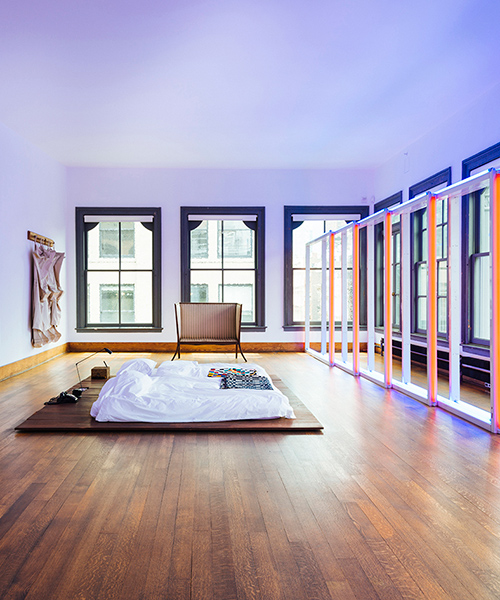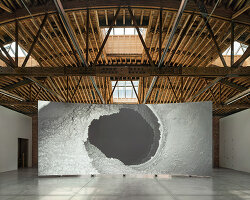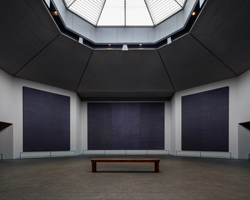as one of the most significant artists of the twentieth century, donald judd’s life and legacy continue to influence the fields of art, architecture, and design today. his drawings, paintings, prints, sculptures, objects, writings and radical ideas perforate the definitions of any definitive art movement. judd reflected on the idea of ‘space’ as a physical, and flexible element, and sought to create work that assumed a material presence, demonstrated through a strong use of color, form, and medium.
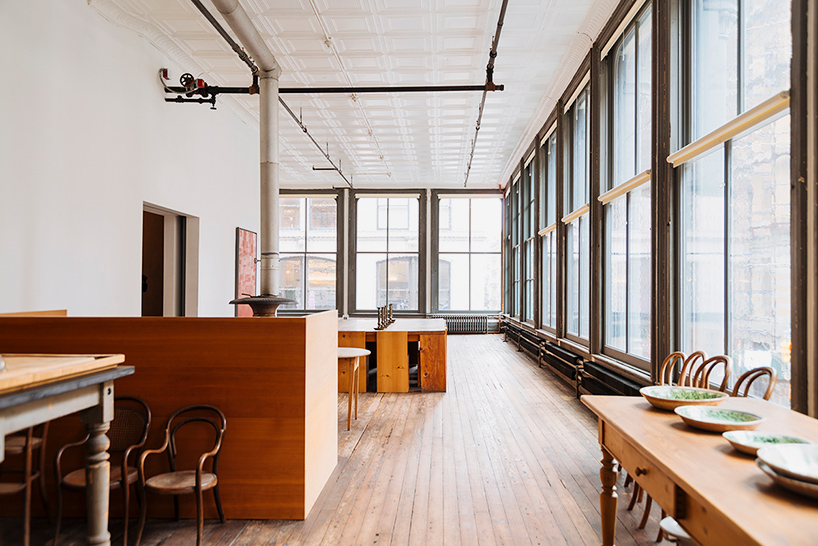
2nd floor, 101 spring street, new york
image by charlie rubin © judd foundation licensed by ARS
more than 23 years after his death, today the american artist’s life and work is immortalized through the judd foundation. in its locations in new york city and marfa, texas, the organization maintains and preserves judd’s permanently installed living spaces, work studios, libraries, and archives. founded in 1996, the foundation seeks to foster a broader understanding of the artist’s legacy by offering visitors access to his personal spaces and artistic resources, and through the development of educational initiatives.
designboom visited the judd foundation to learn more about its mission and the artistic archive it houses.
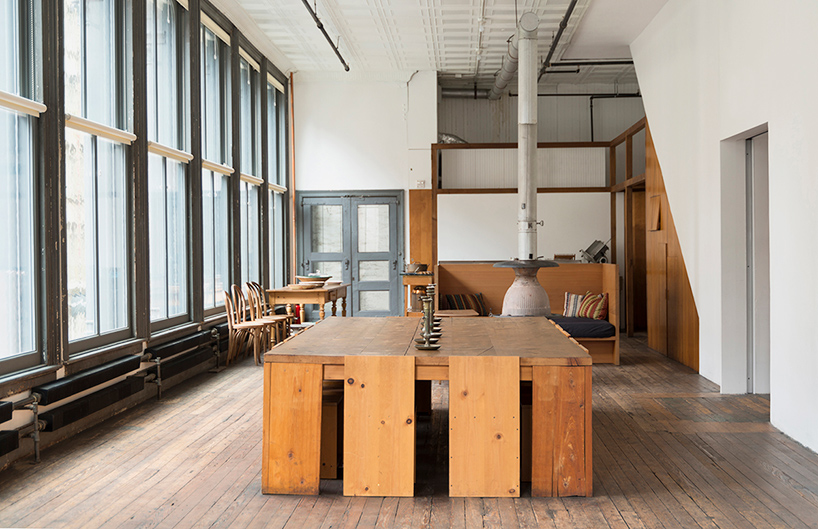
2nd floor, 101 spring street, new york
image by charlie rubin © judd foundation licensed by ARS
the judd foundation’s new york city space is located at 101 spring street, a five story cast-iron building purchased by the artist in 1968. designed by architect nicholas whyte and constructed in 1870, the historic building served as judd’s residence, where he lived with his wife and two children, flavin and rainer. also his artistic studio, the site is considered as the first place judd developed the concept of permanent installation. a restoration by architecture research office (ARO) preserves his permanently installed spaces and enables the public to experience them as he intended.
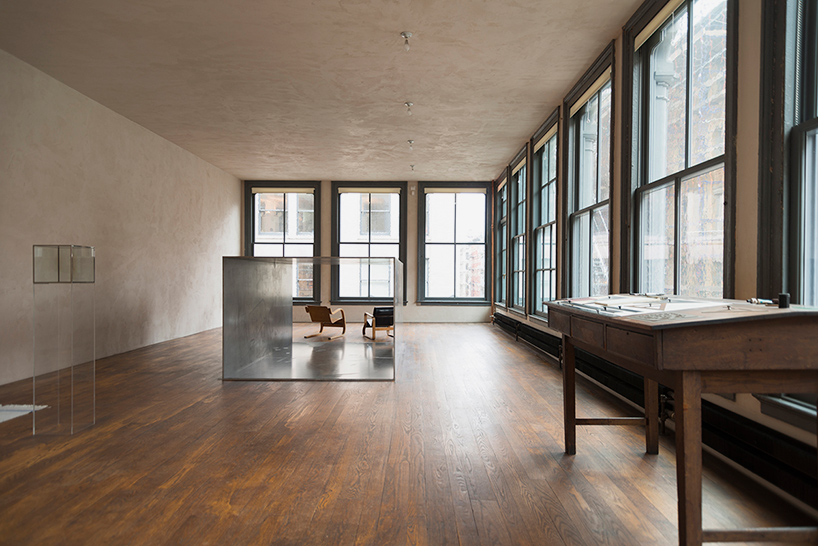
3rd floor, 101 spring street, new york
image by charlie rubin © judd foundation licensed by ARS
across five floors unfolds a collection of carefully-restored architecture, installations, paintings and furniture installed in-situ as judd once had them. in a 1989 essay titled ‘101 spring street,’ judd wrote: ‘I spent a great deal of time placing the art and a great deal designing the renovation in accordance. everything from the first was intended to be thoroughly considered and to be permanent.’
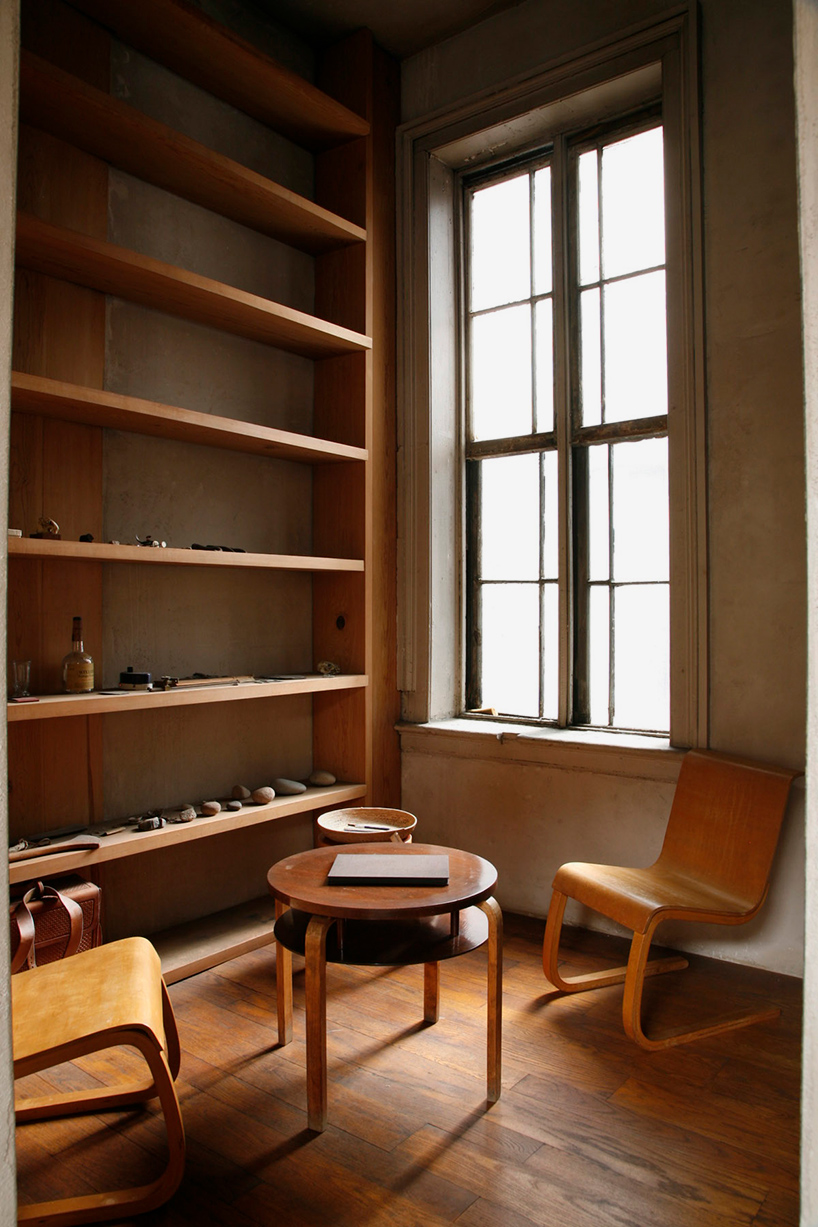
library, 3rd floor, 101 spring street, new york
image by mauricio alejo © judd foundation licensed by ARS
the ground floor of the judd foundation is designated as exhibition space, and hosts a rotating series of shows. on view from now through december 9, 2017 is an exhibition of four paintings by yayoi kusama, a close friend of judd’s. the artists lived in the same building in the 1960s, where kusama conceived her first sculptural installations at the same time that judd constructed his. curated by flavin judd, the exhibition features recent and new works from kusama’s ongoing ‘infinity net’ series.

4th floor, 101 spring street, new york
image by charlie rubin © judd foundation licensed by ARS
the remaining floors are organized according to the artist’s original living and working arrangements. the second floor houses a kitchen and dining room bathed in natural light filtered through expansive glazed windows. a hidden architectural intervention — a tiny pop-up puppet theater originally installed for judd’s children — is tucked beneath a stairwell. the third and fourth floors are occupied by studio space and large-scale artworks, while the fifth floor hosts the bedroom (with a judd-designed bed frame positioned on the floor) and an expansive light piece by dan flavin that spans the western wall.
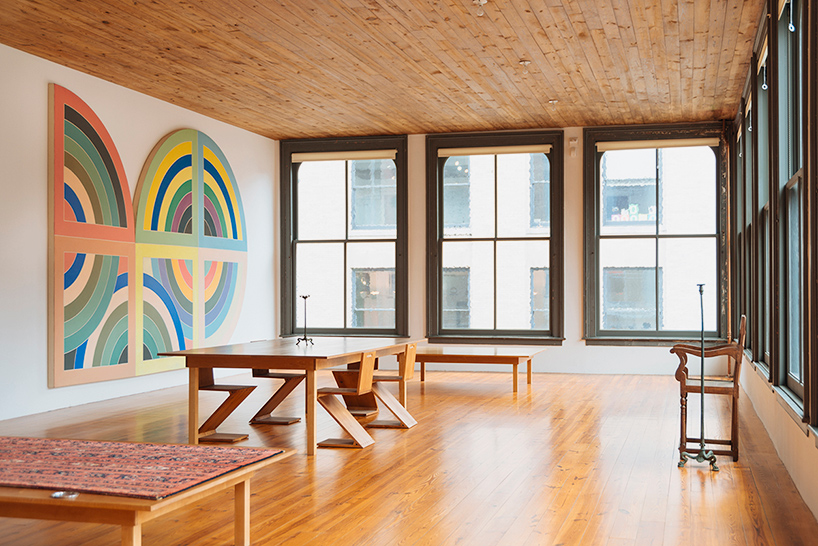
4th floor, 101 spring street, new york
image by charlie rubin © judd foundation licensed by ARS
donald judd furniture is placed alongside paintings by frank stella, light works by dan flavin, and installations by claes oldenburg, each carefully situated within meticulously-restored architectural environments. an eclectic assortment of elements and objects collected by judd throughout his life are also displayed, such as utensils, tapestries, books and old belongings. these items, presented as judd would have himself had them, offer an intimate view in to the artist’s personal life.
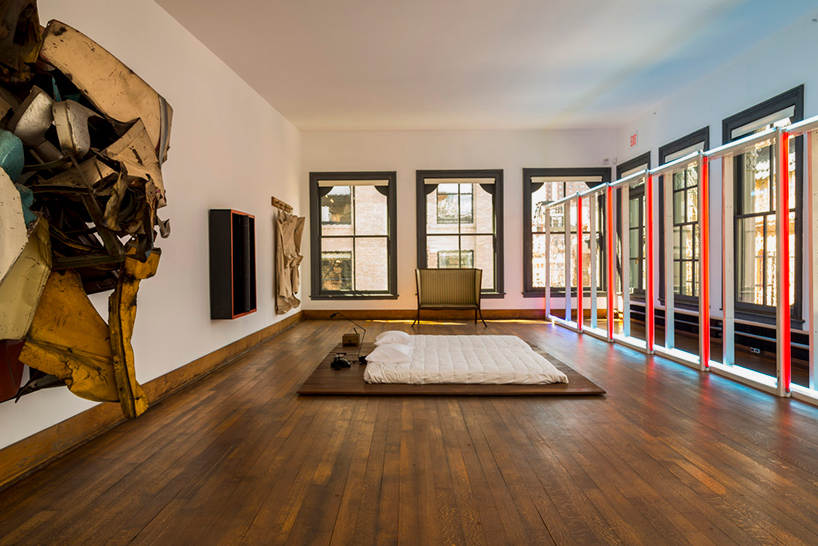
5th floor, 101 spring street, new york
image by joshua white © judd foundation
donald judd art © judd foundation / artists rights society (ARS), new york licensed by ARS
the relationship between judd’s art, design, and the building’s architecture is a subtle and sensitive one. ‘very early with the building in new york on spring street, he [donald judd] was faced with what to do with architecture,’ his son flavin judd remarks on the theme. ‘while they are separate and distinct things, for don it was similar in that you didn’t want to ruin the building and its history with what you’re adding to it — you just want to improve it if you can, and if you have to. he’s going to the most basic level of building up what is already there…’
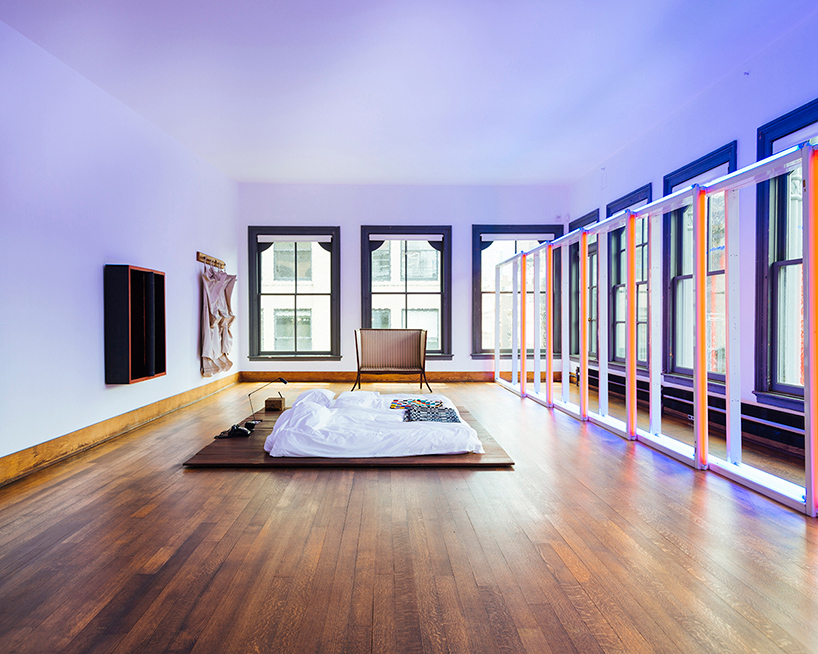
5th floor, 101 spring street, new york
image by charlie rubin © judd foundation
donald judd art © judd foundation / artists rights society (ARS), new york licensed by ARS
this idea of ‘building-up’ is ever present across judd’s design works. in extensive writings detailing his design thinking, judd outlined his philosophy of using simple and honest materials, following rigorous quality standards, framing furniture that fits the scale and proportion of a space, and his sometimes obsessive attention to detail.
on the second floor of the foundation, a judd-designed table and chair set exemplifies these values. 10 chairs made in wood are constructed with the same top form, but with 10 different bases comprising their bottom half. these variations on the theme — an idea central to judd’s creative thinking — subtly shifts the volume, expressing a new composition through subtle intervention. interactions result from open and closed geometries, inside and outside shapes, and both transparent and compact forms.
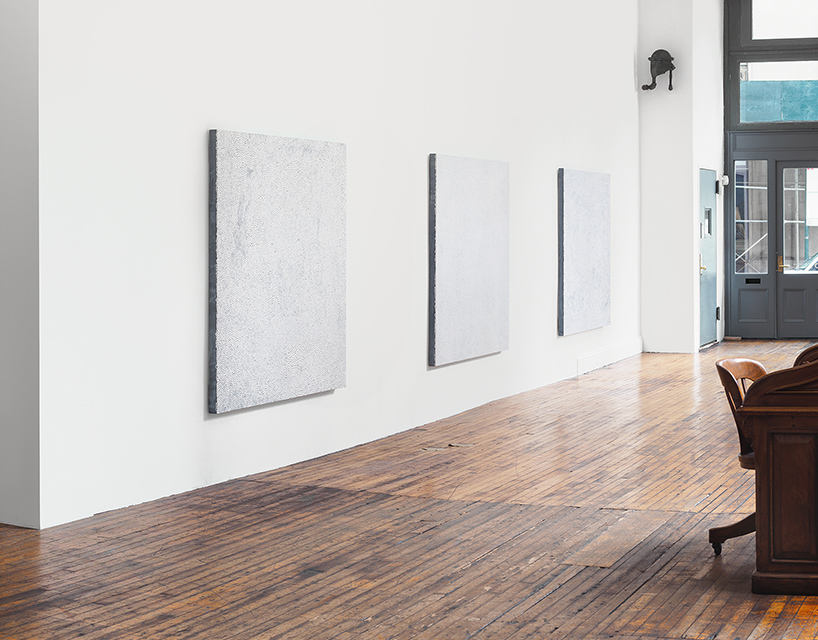
installation view of yayoi kusama, ground floor, 101 spring street | image by sol hashemi © judd foundation
yayoi kusama art © yayoi kusama
david zwirner, new york; ota fine arts, tokyo/singapore; victoria miro, london; yayoi kusama inc.
‘I am often told that the furniture is not comfortable, and in that not functional,’ judd wrote in a 1993 essay titled ‘it’s hard to find a good lamp’. the source of the question is in the overstuffed bourgeois victorian furniture, which, as I said, never ceased. the furniture is comfortable to me. rather than making a chair to sleep in or a machine to live it, it is better to make a bed. a straight chair is best for eating or writing. the third position is standing.’
‘if you like simple forms in art you will not make complicated ones in architecture,’ donald judd elaborated in ‘on furniture’ in 1986. ‘complicated, incidentally, is the opposite of simple, not complex, which both may be’.
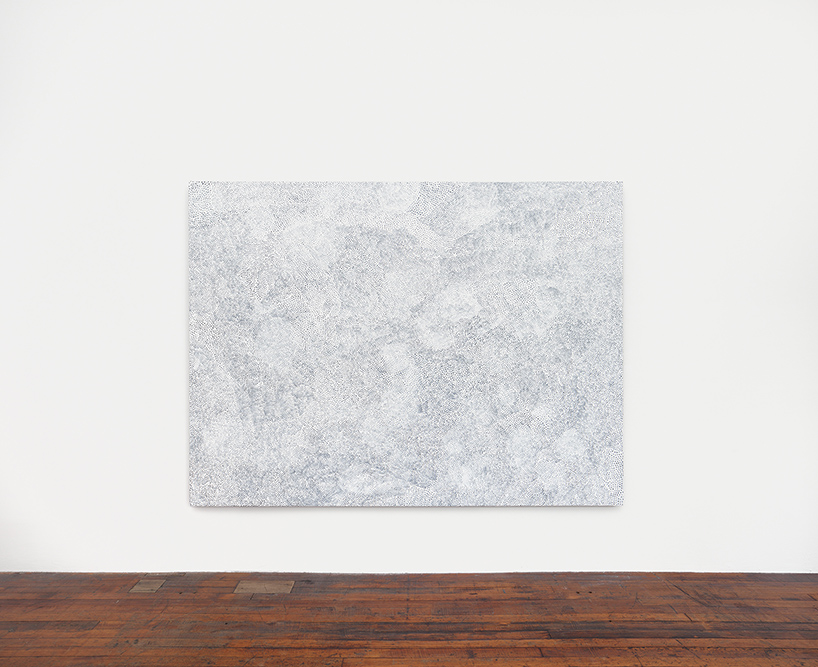
yayoi kusama, infinity-nets, 2017 | acrylic on canvas | 76 3/8 x 102 inches (194 x 259 cm)
image by sol hashemi © judd foundation
yayoi kusama art © yayoi kusama
david zwirner, new york; ota fine arts, tokyo / singapore; victoria miro, london; yayoi kusama inc.
donald judd furniture continues to be made to his original specifications. wooden objects — produced in a variety of hardwood and color plywood variations, and crafted entirely by hand — continue to be made in the united states. metal furniture — manufactured in painted aluminum colors, anodized aluminum, brass, and copper — is made in switzerland by lehni to the exact specifications in which it was first developed there in 1984. though largely industrially fabricated, the metal pieces are crafted with considerable handwork in the unique bending of the edges of each piece. more than 70 of judd’s designs, all uniquely stamped and numbered, are available for custom order.
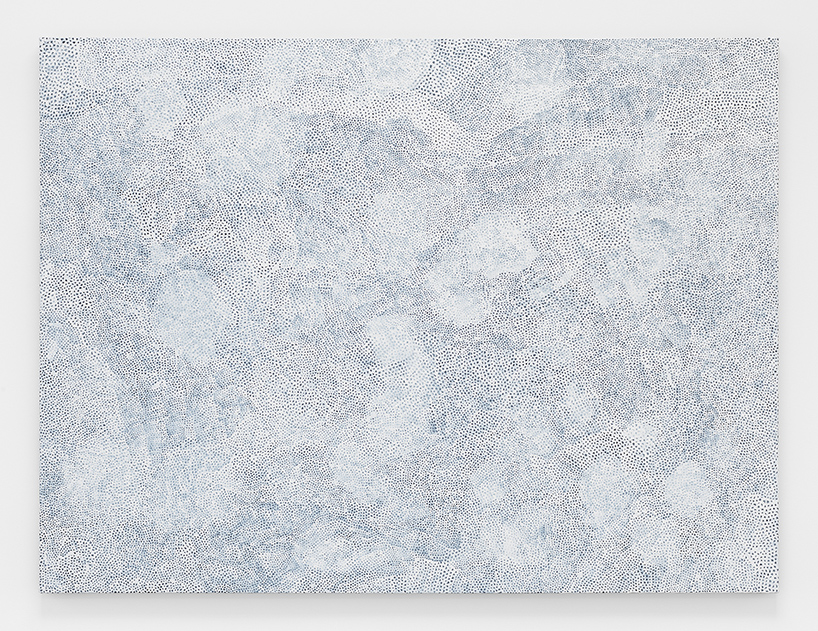
yayoi kusama, infinity-nets, 2017
acrylic on canvas | 76 3/8 x 102 | inches (194 x 259 cm)
image © yayoi kusama, courtesy of david zwirner, new york; ota fine arts, tokyo / singapore; victoria miro, london; yayoi kusama inc
the relationship between judd’s art, design and architectural works are all deeply interwoven around his philosophies on space and scale. ‘proportion is very important to us, both in our minds and lives and as objectified visually, since it is thought and feeling undivided, since it is unity and harmony, easy or difficult, and often peace and quiet,’ judd wrote in his 1983 essay, ‘art and architecture’. ‘proportion is specific and identifiable in art and architecture and creates our space and time. proportion and in fact all intelligence in art is instantly understood, at least by some. it’s a myth that difficult art is difficult.’
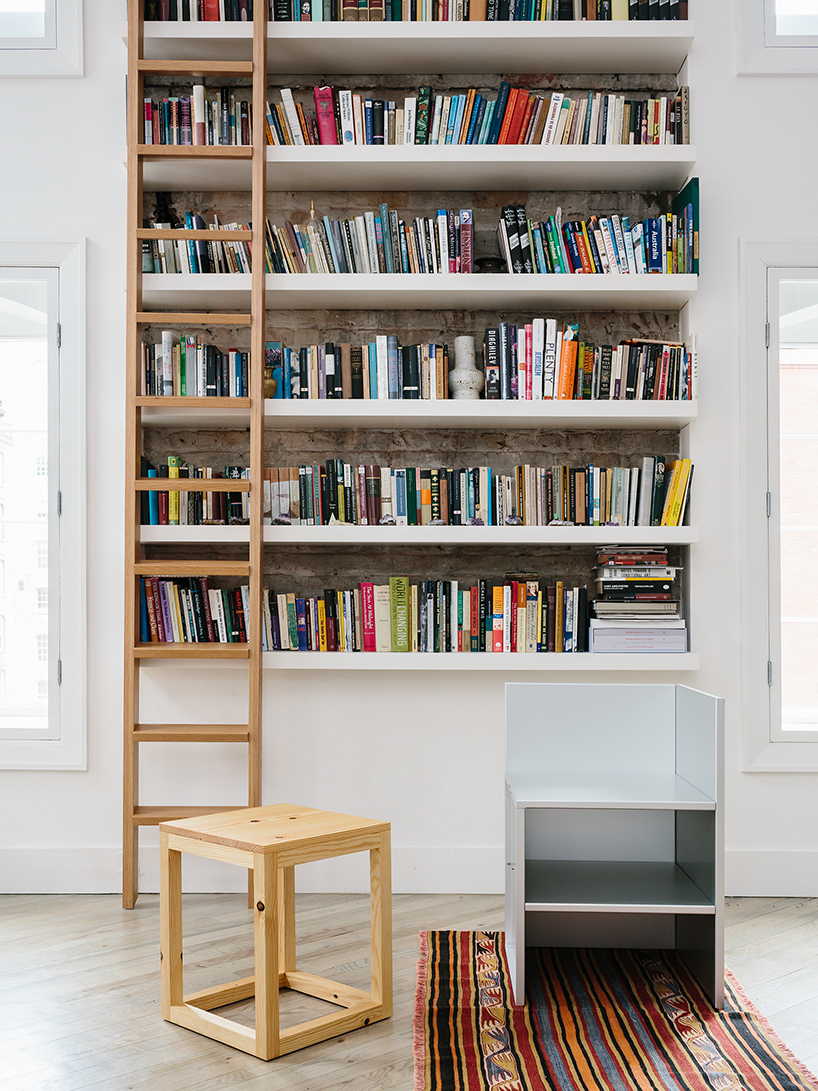
pine library stool 42 and corner chair 15, clear anodized aluminum
image by brian ferry © judd foundation / donald judd furniture © judd foundation
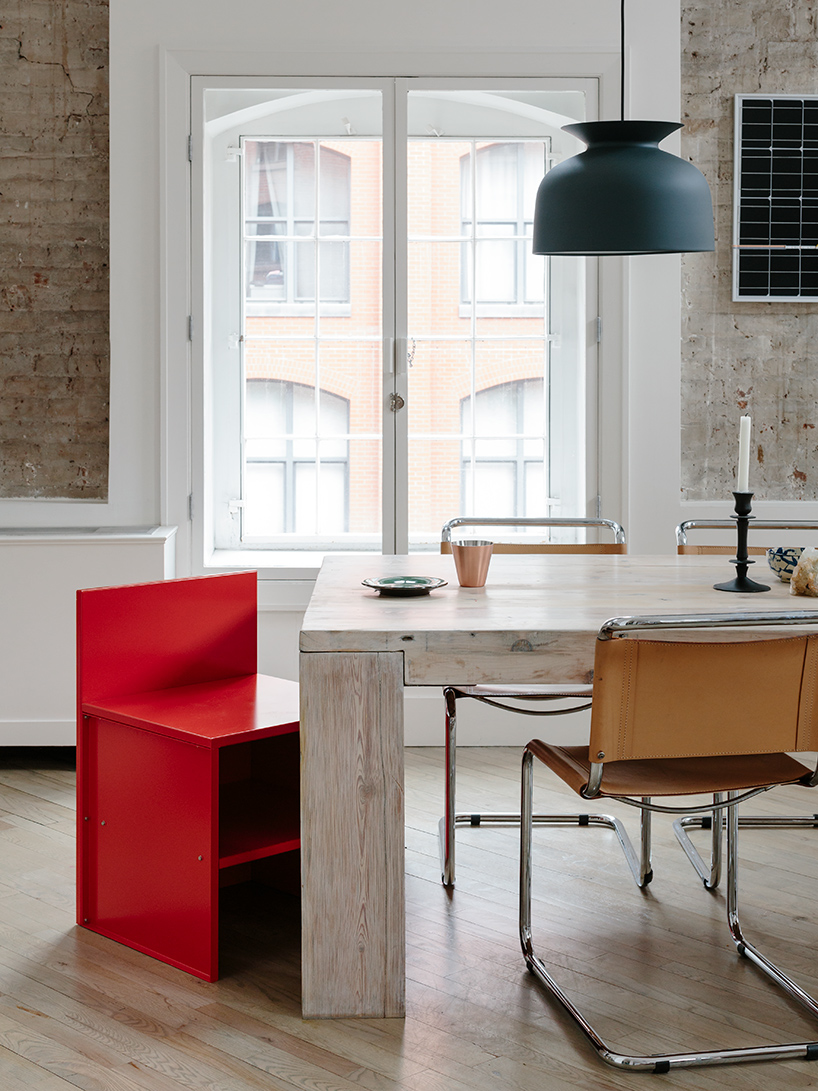
chair 2, traffic red/RAL 3020 | image by brian ferry © judd foundation / donald judd furniture © judd foundation
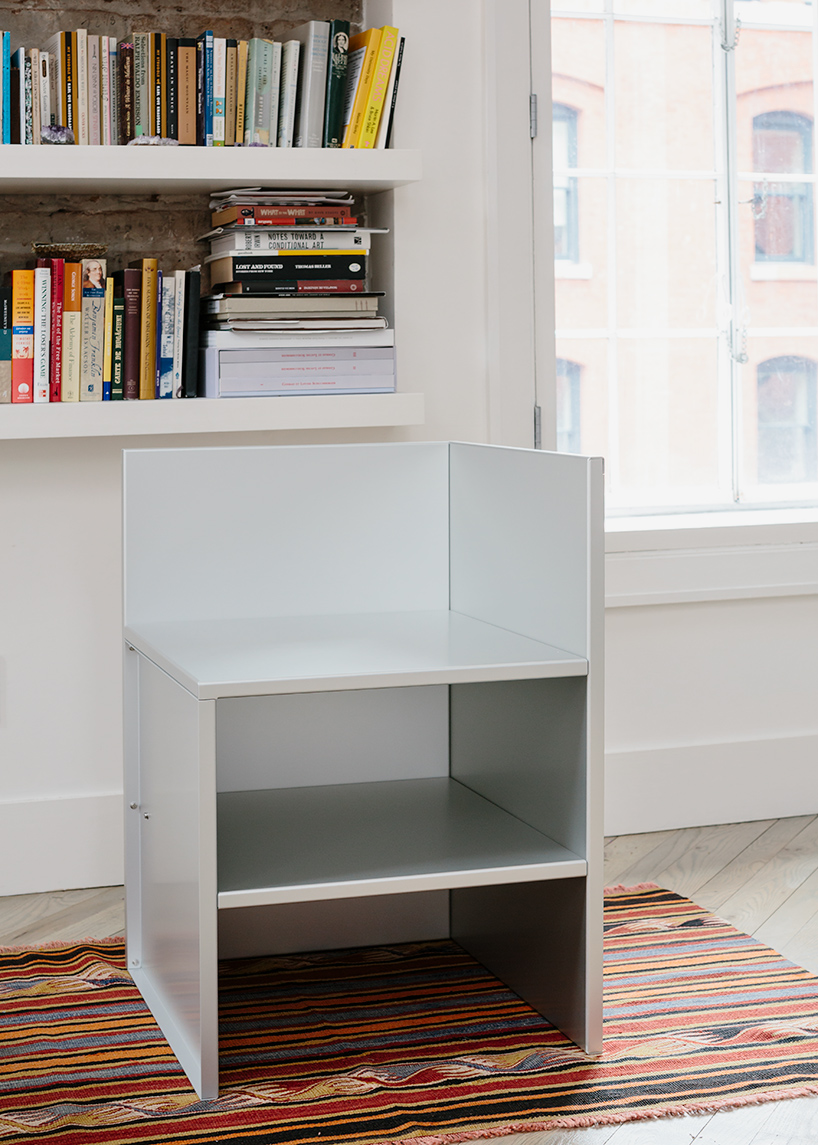
corner chair 15, clear anodized aluminum
image by brian ferry © judd foundation / donald judd furniture © judd foundation
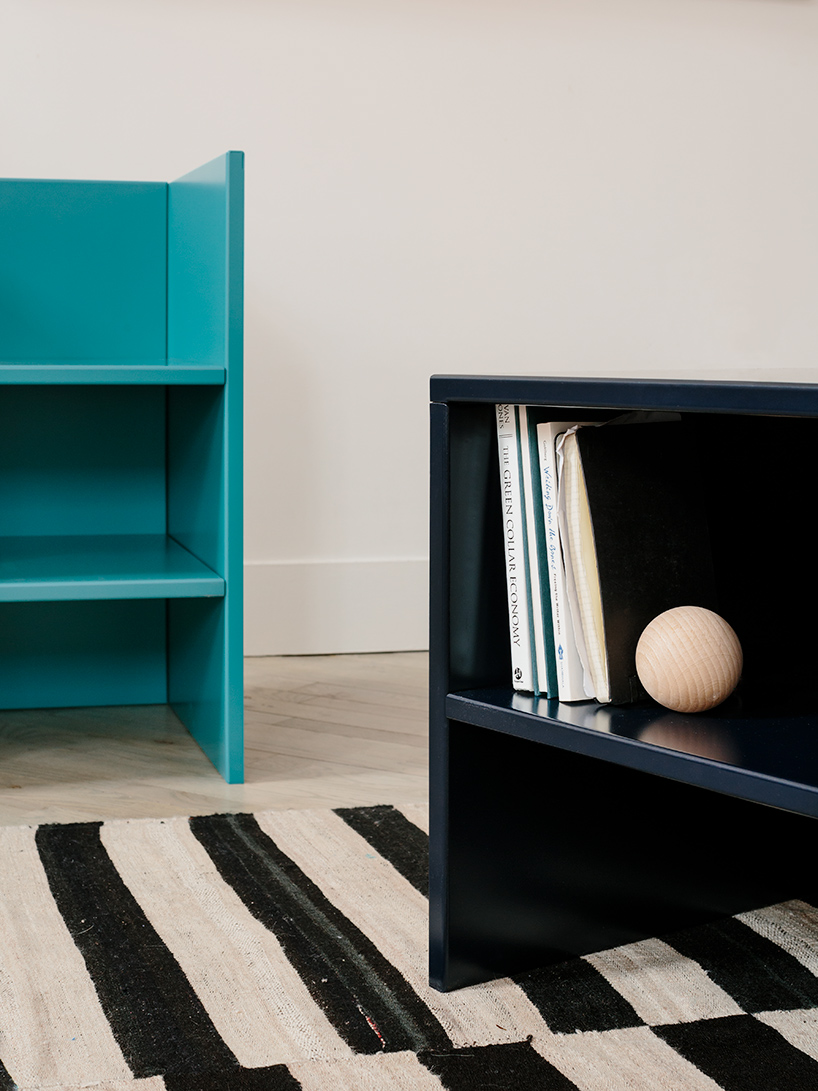
armchair 1, turquoise blue/RAL 5018 and stool 5, black blue/RAL 5004
image by brian ferry © judd foundation / donald judd furniture © judd foundation
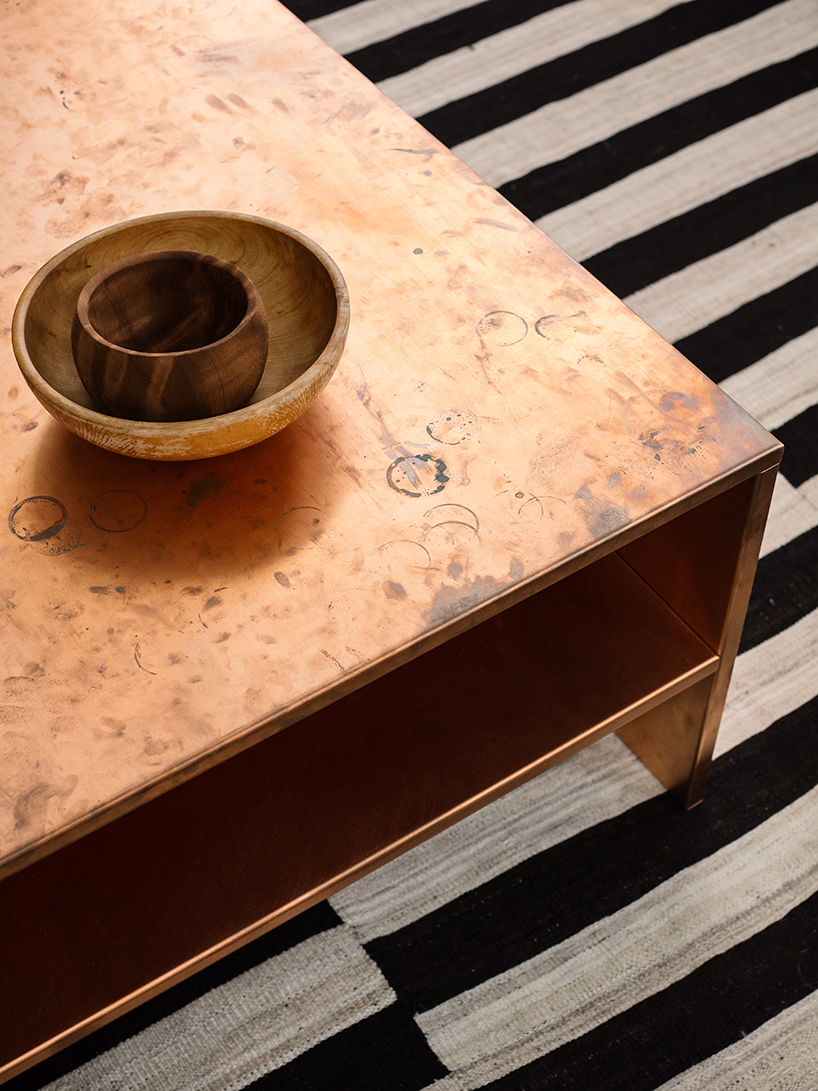
table 12, copper (detail)
image by brian ferry © judd foundation / donald judd furniture © judd foundation
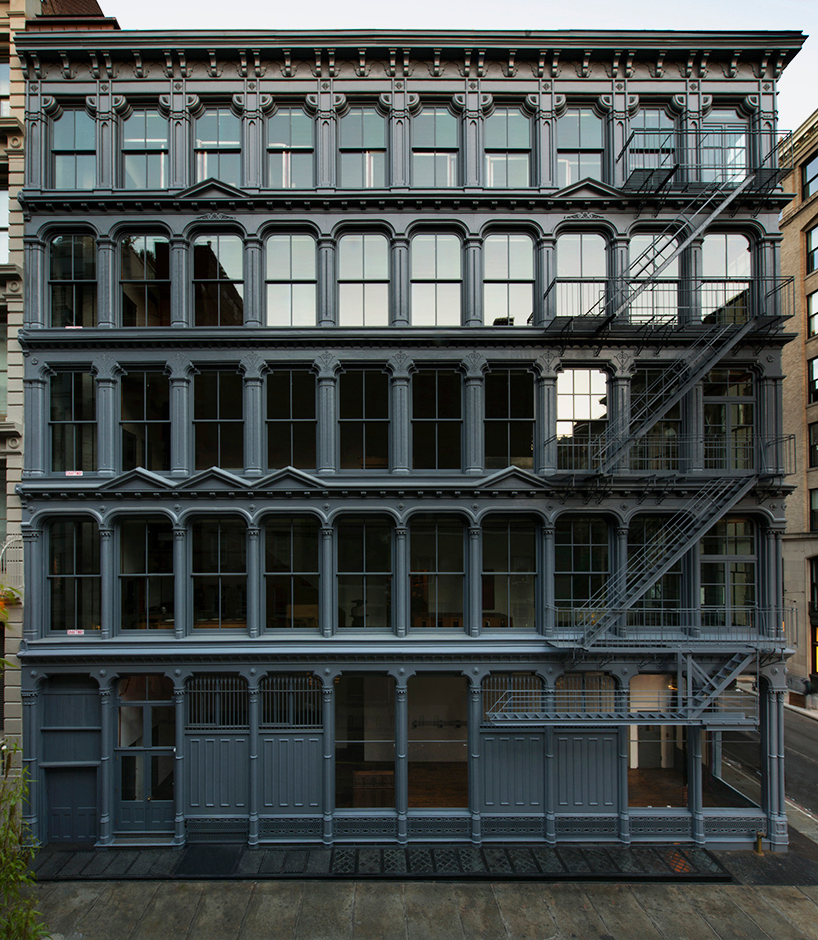
exterior of the donald judd foundation at 101 spring street, new york
image by joshua white © judd foundation licensed by ARS
